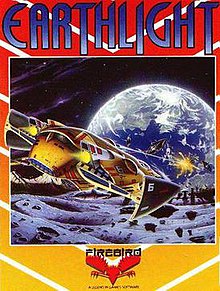
The NewZealand Story is a platform game developed and released in arcades by Taito in 1988. The concept and setting were inspired by a holiday trip in New Zealand by one of the Taito programmers. The player controls Tiki (ティキ), a kiwi who must save his girlfriend Phee Phee (ピューピュー) and several of his other kiwi chick friends who have been kidnapped by a large blue leopard seal. While avoiding enemies, the player has to navigate a scrolling maze-like level, at the end of which they release one of Tiki's kiwi chick friends trapped in a cage. In 2007, the arcade game received a remake for the Nintendo DS under the title New Zealand Story Revolution.

Gauntlet II is a 1986 arcade game produced by Atari Games that serves as the immediate sequel to the original Gauntlet, which was released the previous year. Like its predecessor, Gauntlet II is a fantasy-themed top down dungeon crawler game and was released as a dedicated cabinet, as well as a conversion kit, both available in 2-player and 4-player versions.

Your Sinclair, or YS as it was commonly abbreviated, was a commercially published and printed British computer magazine for the Sinclair range of computers, mainly the ZX Spectrum. It was in circulation between 1984 and 1993.

Operation Wolf is a light gun shooter arcade game developed by Taito and released in 1987. It was ported to many home systems.

Operation Thunderbolt is a light gun shooter video game developed by Taito and released for arcades in 1988. As the sequel to Operation Wolf, changes include two-player gameplay with two positional gun controllers mounted on the arcade cabinet, and a new forward-scrolling pseudo-3D perspective combined with side-scrolling sections.
Pete Cooke is a British computer games programmer, best known for his work published in the 1980s for the ZX Spectrum.

Tau Ceti is a video game published in 1985 by CRL for the ZX Spectrum and converted to the Amstrad CPC, Amstrad PCW, Atari ST, Commodore 64, and MS-DOS. It was designed and programmed by Pete Cooke. The world, set on Tau Ceti III orbiting Tau Ceti, is displayed using 3D graphics with shadow effects. The planet has a day and night cycle.

Sanxion is a horizontally scrolling shooter developed by Stavros Fasoulas for the Commodore 64 and published in 1986 by Thalamus Ltd. It was the first game released by Thalamus. A ZX Spectrum port followed in 1989. Fasoulas also wrote Delta and Quedex.

Technician Ted is a platform game for the Amstrad CPC and ZX Spectrum home computers that was written by Steve Marsden and David Cooke and published in 1984 by Hewson Consultants.

Hades Nebula is a 1987 vertically scrolling shooter for the Commodore 64, ZX Spectrum and Atari ST by Nexus Information Systems. The player controls an upgradable fighter that must battle its way through thousands of enemy ships before it confronts the final boss, Emperor Hades. There are fifteen levels.
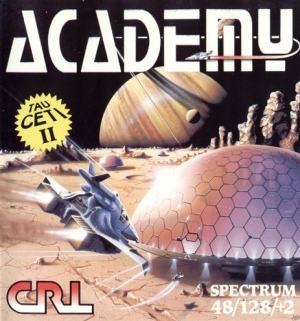
Academy is an action/simulation video game for the Commodore 64, MS-DOS, ZX Spectrum, Amstrad CPC, and Amiga It was released in 1986 by the CRL Group. It is the sequel to Tau Ceti and written by the same author, Pete Cooke.
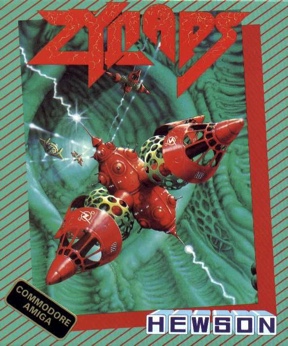
Zynaps is a side-scrolling shoot 'em up video game published by Hewson Consultants for the ZX Spectrum, Amstrad CPC and Commodore 64 in 1987 and for the Atari ST in 1988 and the Amiga.
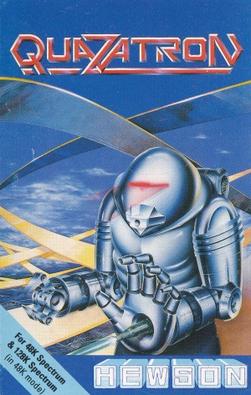
Quazatron is an action game developed by Graftgold, and released in 1986 by Hewson Consultants. It was designed by Steve Turner for the ZX Spectrum.

Dark Sceptre is a strategy adventure video game by Mike Singleton's design team Maelstrom Games, for Beyond Software. It was published by Firebird Software for the ZX Spectrum in 1987 and for the Amstrad CPC in 1988.
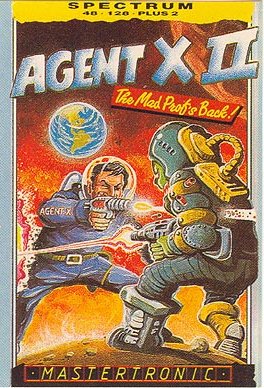
Agent X II: The Mad Prof's Back is a computer game released in 1987 for the ZX Spectrum, Amstrad CPC and Commodore 64. It is the follow-up to the ZX Spectrum game Agent X.

RoboCop is a beat 'em up / run and gun video game developed and published by Data East for arcades in 1988 based on the 1987 film of the same name. It was sub-licensed to Data East by Ocean Software, who obtained the rights from Orion Pictures at the script stage. Data East and Ocean Software subsequently adapted the arcade game for home computers.

Big Trouble in Little China is a side-scrolling beat 'em up designed by Mev Dinc and published by Electric Dreams Software in 1986 for the Amstrad CPC, Commodore 64, and ZX Spectrum. It is a tie-in licence for the film of the same name.
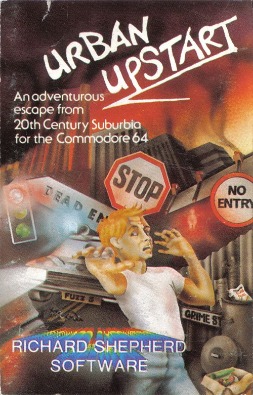
Urban Upstart is a 1983 text adventure programmed by Pete Cooke and published by Richard Shepherd Software for the ZX Spectrum and Commodore 64. Urban Upstart is set in the fictional British town of Scarthorpe, a particularly grim town with high crime and unemployment rates. The protagonist begins in their house at three o'clock in the morning, with the objective of escaping from Scarthorpe.

Beyond the Ice Palace is a 1988 platform game published by Elite Systems for the Amiga, Amstrad CPC, Atari ST, Commodore 64, and ZX Spectrum.

Light Force is a 1986 vertically scrolling shooter designed by Greg Follis and Roy Carter, developed by their company Gargoyle Games, and published under their Faster Than Light imprint. It was released for the Amstrad CPC, Commodore 64, and ZX Spectrum platforms.
